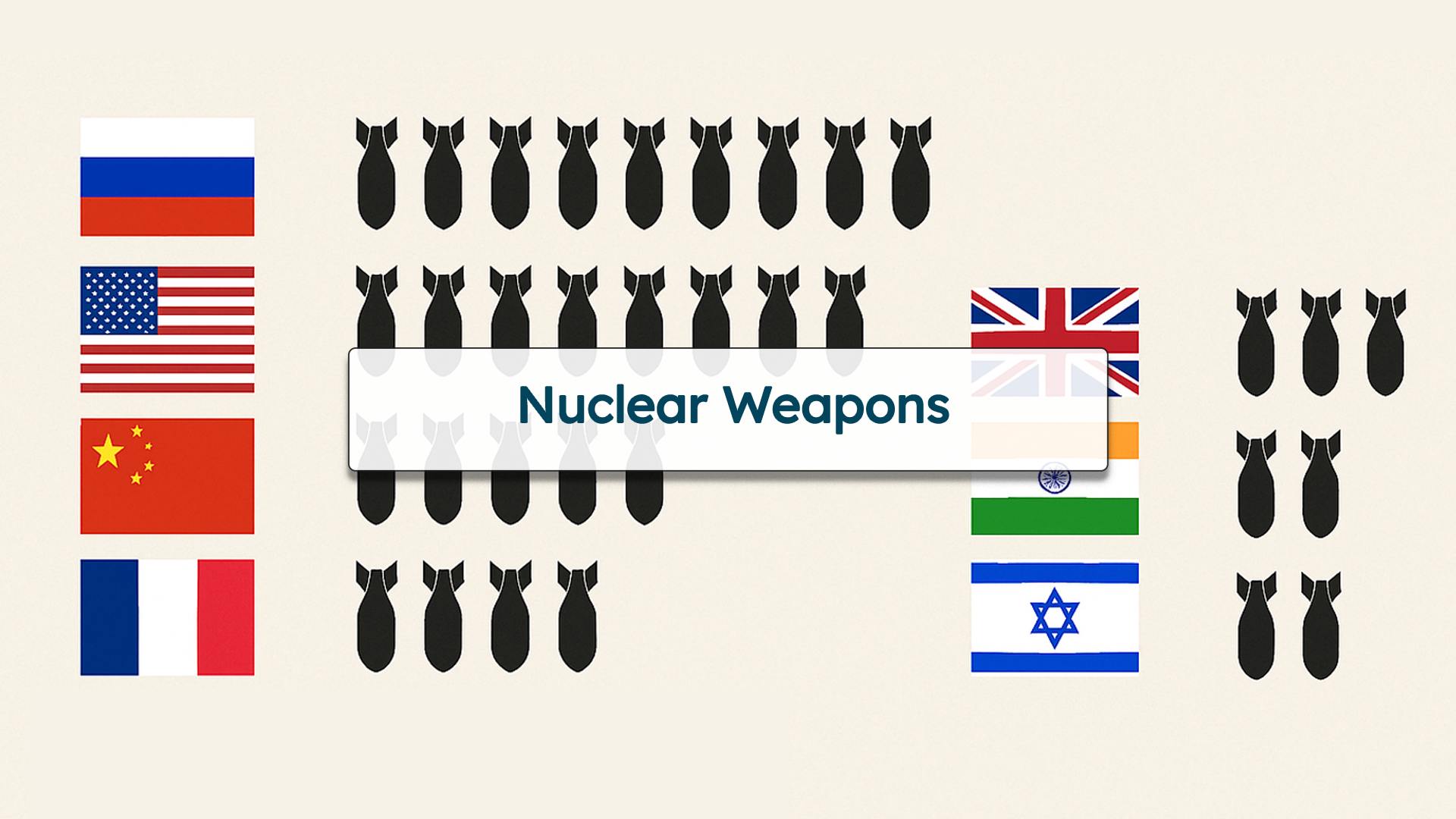As of early 2024, nine countries possess nuclear weapons, with their arsenals varying significantly in size and capability. The Stockholm International Peace Research Institute (SIPRI) provides detailed insights into these arsenals.
Global Nuclear Arsenal Rankings (2024)
Russia holds the largest number of nuclear warheads in the world, totaling around 5,580. Out of these, about 1,710 are deployed, 2,670 are stored or reserved, and an estimated 1,200 are retired but not yet dismantled. Russia conducted its first nuclear test in 1949.
The United States follows closely with approximately 5,044 nuclear warheads. This includes 1,670 deployed, 1,938 in reserve, and 1,336 retired warheads. The U.S. was the first country to test a nuclear weapon in 1945.
China has significantly increased its stockpile, now estimated at 500 warheads, with only 24 reportedly deployed. The rest remains in reserve. China may soon place some warheads on high alert for the first time since its first nuclear test in 1964.
France possesses around 290 nuclear warheads, of which 280 are deployed and just 10 are held in reserve. France conducted its first test in 1960 and maintains a highly capable strategic deterrent.
The United Kingdom maintains a total of 225 warheads, with approximately 120 deployed and 105 stored. Its nuclear program began with a test in 1952.
India has increased its arsenal to an estimated 172 warheads, all of which are believed to be in storage. India tested its first nuclear device in 1974 and continues to develop longer-range and submarine-launched systems.
Pakistan is believed to possess around 170 warheads. Like India, Pakistan’s warheads are not thought to be actively deployed. The country conducted its first nuclear test in 1998.
Israel is widely believed to maintain a nuclear arsenal of around 90 warheads, though it has never officially confirmed this. It has not conducted a declared nuclear test, and its policy of ambiguity remains unchanged.
North Korea is estimated to have assembled about 50 nuclear warheads, with enough fissile material for potentially up to 90. Since its first test in 2006, North Korea has continued to prioritize the expansion of its nuclear capabilities.
Key Observations
- Russia and the United States together account for around 90% of the world’s nuclear weapons. Both countries are actively modernizing their arsenals, including delivery systems such as missiles and submarines.
- China’s nuclear growth has been especially notable, increasing from 410 to 500 warheads between 2023 and 2024. It is also preparing to deploy some warheads on high operational alert for the first time.
- India and Pakistan are in a tight race, with India now slightly ahead in terms of total warheads. Both countries continue to develop new platforms for nuclear delivery, though neither currently deploys its warheads in an active status.
- North Korea’s nuclear program remains a major international concern. While its arsenal is smaller in comparison, its focus on miniaturization and missile technology gives it a disproportionate strategic impact.
Conclusion
The global nuclear landscape in 2024 is defined by modernization and strategic recalibration. Although the overall number of warheads continues to decline due to the dismantling of retired weapons, the number of operationally available warheads is rising
Sources:
- sipri.org
- indianexpress.com


